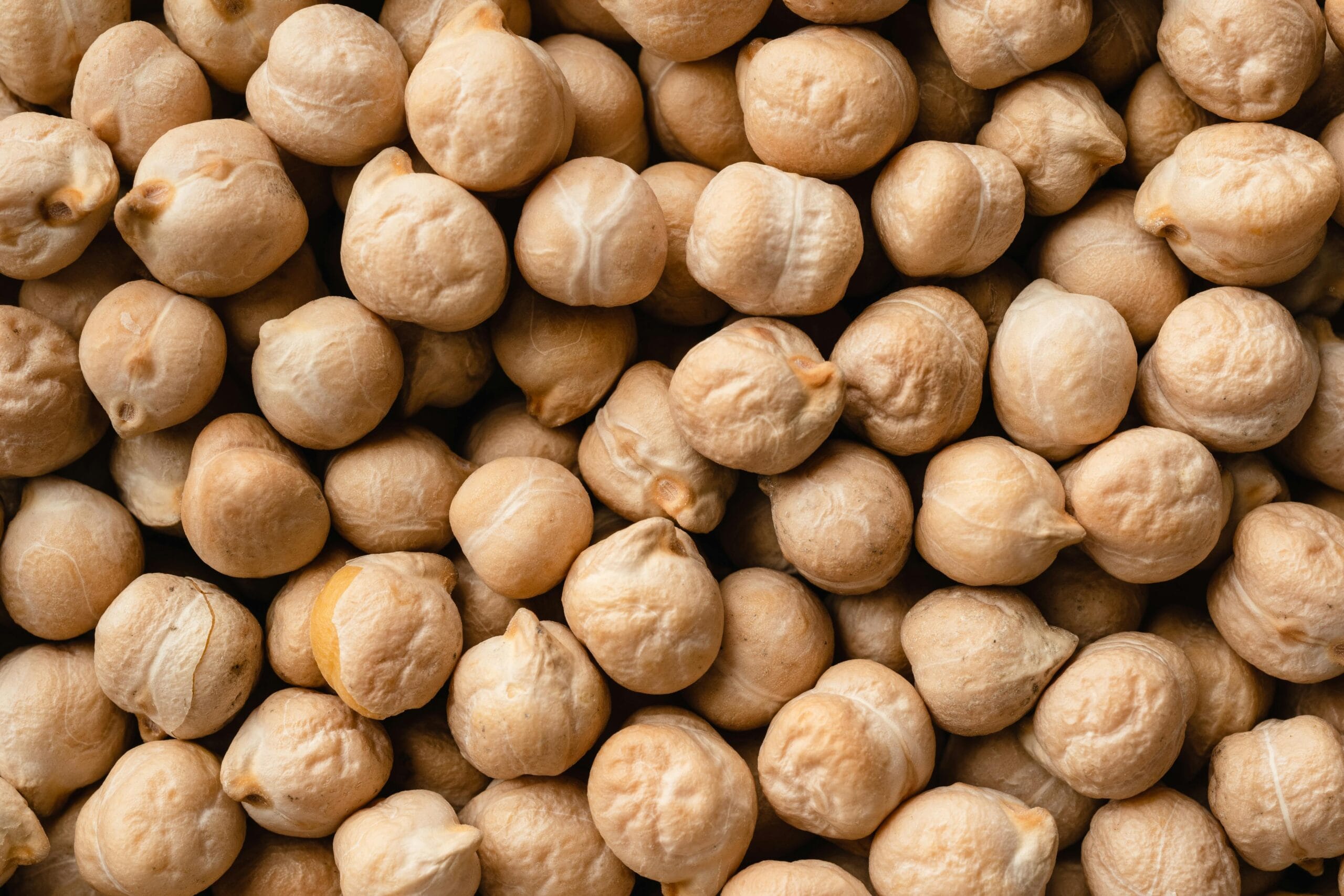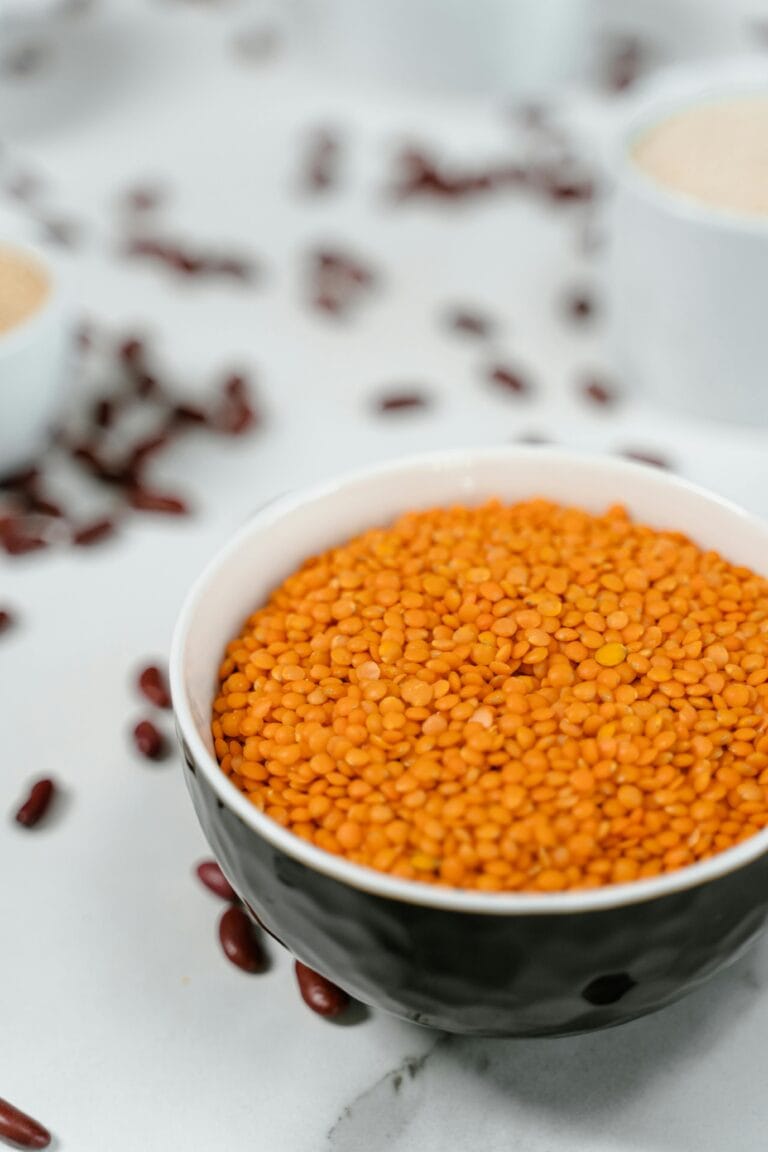Introduction to Chickpeas
Chickpeas, also known as garbanzo beans, are legumes belonging to the family Fabaceae, with a rich history that dates back over 7,000 years. Originating in the Middle East, particularly in regions of modern-day Turkey and Iraq, they have permeated global cuisines and cultures, establishing themselves as a vital source of nutrition. The introduction of chickpeas to various continents reflects their adaptability and versatility, making them a staple food in countries from India to Italy.
These legumes thrive in warm climates and are typically grown in well-drained soils. The growth process involves sowing seeds in the early spring, followed by a flowering phase that eventually leads to the formation of seed pods containing the chickpeas. Harvesting occurs in late summer when the pods turn brown and dry, signaling that the legumes are ready for collection. Notably, chickpeas are resilient crops, often cultivated in areas with limited water resources, which adds to their appeal as a sustainable food source.
The nutritional profile of chickpeas is commendable. They are rich in plant-based protein, making them an excellent meat alternative for vegetarians and vegans. Additionally, chickpeas provide an array of vitamins, including B vitamins such as folate, which is essential for cellular health, and vitamin C, known for its antioxidant properties. The high fiber content of chickpeas promotes digestive health and helps regulate blood sugar levels, making them a beneficial addition to any diet.
In worldwide cuisines, chickpeas are remarkably versatile. From the famous Middle Eastern dish, koshary, to Indian curries and Mediterranean salads, they can be enjoyed in various forms—whole, mashed, or ground into flour. Their subtle flavor and hearty texture allow them to absorb spices and flavors well, establishing them as universal ingredients with both nutritional benefits and culinary potential.
Health Benefits of Chickpeas
Chickpeas, a versatile legume also known as garbanzo beans, are celebrated not only for their delicious taste but for their remarkable health benefits. Being a rich source of protein, they serve as an excellent alternative to meat, making them an essential component in vegetarian and vegan diets. A single cup of cooked chickpeas can provide approximately 15 grams of protein, fulfilling the dietary needs for muscle maintenance and growth.
In addition to their protein content, chickpeas are high in dietary fiber, which plays a significant role in promoting digestive health. Fiber aids in regulating bowel movements and helps to prevent constipation. The consumption of high-fiber foods like chickpeas has also been linked to decreased risk of gastrointestinal disorders. Furthermore, chickpeas have been found to help maintain healthy cholesterol levels, contributing to overall heart health. By lowering levels of LDL cholesterol, these legumes potentially reduce the risk of heart disease.
The nutritional profile of chickpeas extends beyond protein and fiber. They are abundant in essential vitamins and minerals, including iron, magnesium, and folate, which are vital for the body to function optimally. Iron promotes effective oxygen transport in the bloodstream, while magnesium is crucial for muscle and nerve function, and folate is important for DNA synthesis and cell division. Regular inclusion of chickpeas in one’s diet can also aid in weight management, as their high fiber and protein content can enhance satiety, thereby reducing overall calorie intake.
Moreover, chickpeas may aid in stabilizing blood sugar levels, making them a suitable choice for individuals managing diabetes. Their low glycemic index ensures that they release glucose slowly into the bloodstream, providing a steady source of energy without sudden spikes in blood sugar. Overall, the integration of chickpeas into daily meals is not only delicious but also beneficial for one’s long-term health.
Incorporating Chickpeas into Your Daily Diet
Chickpeas, also known as garbanzo beans, are a versatile ingredient that can enhance a variety of dishes while providing numerous health benefits. To incorporate chickpeas into your daily meals, consider several cooking methods such as boiling, roasting, and pureeing, which can add flavor and nutrition to your diet.
One of the simplest ways to enjoy chickpeas is by preparing a refreshing chickpea salad. Combine canned or cooked chickpeas with diced cucumbers, tomatoes, red onion, and a drizzle of olive oil and lemon juice. This salad not only highlights the nutty flavor of chickpeas but also provides a rich source of vitamins and fiber. Another option is to make a hearty chickpea soup by simmering chickpeas with vegetables and broth, which provides a comforting meal packed with protein.
For a more creative use of chickpeas, consider making hummus, a classic Middle Eastern dip. To prepare hummus, blend cooked chickpeas with tahini, garlic, lemon juice, and olive oil until smooth. This nutritious dip can be served with vegetables or whole-grain pita, making it a healthy snack option. Alternatively, roasted chickpeas can serve as a crunchy snack; simply toss cooked chickpeas with spices and roast them in the oven until crispy.
In addition to these preparations, chickpeas can be incorporated into various cuisines. For instance, in Indian cooking, chickpeas can be used in curries or as part of chana masala. In Mediterranean dishes, chickpeas can enhance pasta or grain salads, adding texture and protein. When planning your meals, aim for a portion size of approximately half a cup of cooked chickpeas, which is a great addition to lunch or dinner.
Experimenting with chickpeas in different recipes ensures that you not only enjoy their taste but also reap the nutritional benefits they offer, including essential vitamins and minerals, enhancing your overall dietary health.
Environmental Impact and Sustainability of Chickpeas
Chickpeas, or garbanzo beans, are increasingly recognized for their beneficial role in sustainable agriculture. One of the significant environmental advantages of cultivating chickpeas is their remarkably low carbon footprint compared to other protein sources. In a world where global warming and climate change are pressing issues, growing chickpeas offers an environmentally friendly alternative. They require less water than many other crops, making them particularly suitable for regions where water scarcity is a concern. This characteristic enhances their viability as a sustainable food source, particularly in arid and semi-arid climates.
Additionally, chickpeas contribute positively to soil health through a natural process known as nitrogen fixation. By converting atmospheric nitrogen into a form that plants can utilize, chickpeas enhance soil fertility. This benefit makes them an excellent choice for crop rotation systems, as they can improve the sustainability of the farming ecosystem by reducing the need for synthetic fertilizers. As a result, fields can maintain higher productivity over time, which is crucial in addressing food security as the global population grows.
Furthermore, the cultivation of chickpeas can significantly support local economies, providing a viable income source for farmers. This is particularly critical as a shift towards plant-based diets is occurring, reducing reliance on meat-based proteins. By integrating chickpeas into our daily diets, not only do we promote a healthier lifestyle, but we also encourage sustainable agricultural practices that are kinder to our planet. In essence, the environmental impact of chickpeas, including their ability to foster sustainable farming, highlights their importance in contemporary food systems.
In conclusion, chickpeas serve as an exemplary model of how a single crop can positively affect both the environment and local economies, reinforcing their status as a sustainable source of nutrition in an increasingly conscious consumer landscape.







